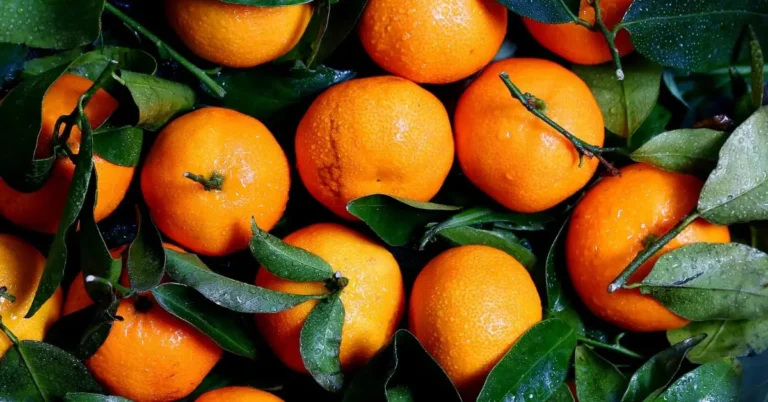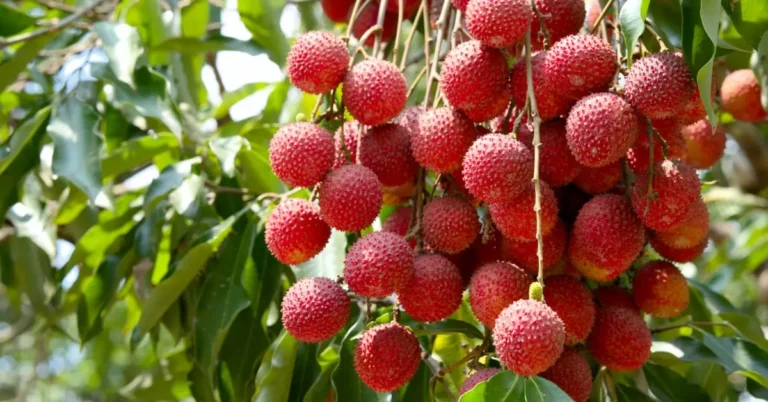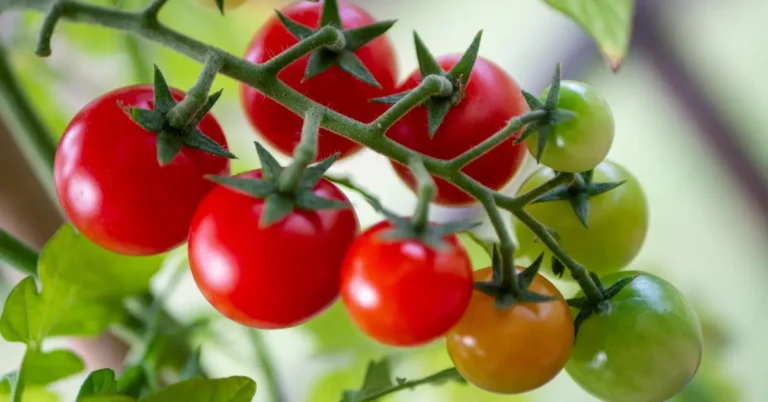9 Fruits That Start With K
Fruits are a delicious and nutritious addition to any diet. Various fruits, from apples to watermelons, offer different flavors, textures, and health benefits. While most of us are familiar with common fruits like bananas and oranges, some lesser-known fruits are worth exploring. This article will look closely at 9 fruits that start with K.
List of Fruits That Start With K
Here is a list of over 9 fruits that start with K and their unique features and health benefits.
1. Kaffir Lime
The Kaffir Lime, also known as the Makrut Lime, is a popular citrus fruit that is native to Southeast Asia. It is widely used in Thai, Indonesian, and Malaysian cuisines for its aromatic leaves and tangy juice.
The fruit is small, round, and bumpy, with a thin, smooth skin that is dark green. Its flesh is juicy and pale green with a tart flavor. However, it is the Kaffir Lime’s leaves that are most commonly used in cooking. They have a distinct citrusy aroma and are used to flavor soups, curries, and sauces.
The Kaffir Lime is also believed to have medicinal properties. Its leaves and rind contain essential oils with anti-inflammatory and anti-bacterial properties, making them helpful in treating skin conditions and wounds.
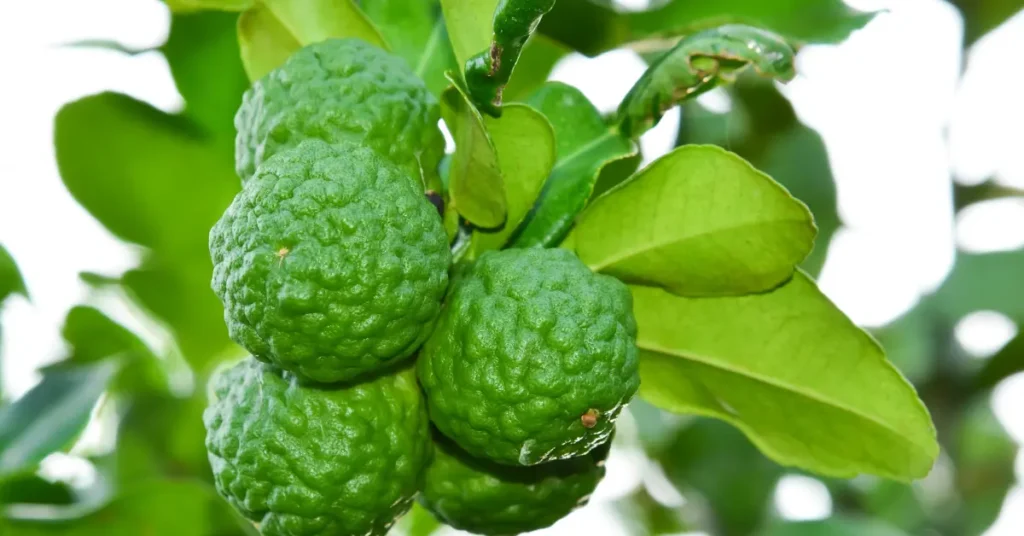
2. Kakadu Plum
The Kakadu Plum, also known as the Billygoat Plum or Gubinge, is a small green fruit found in Northern Australia. It is considered a superfood due to its high Vitamin C content, up to 100 times more than oranges.
The fruit has a tart and tangy flavor, and its green skin turns yellow when ripe. Indigenous Australians have used it for thousands of years for food and medicinal purposes. It is known to have anti-inflammatory and antioxidant properties, making it helpful in boosting the immune system and preventing diseases.
The Kakadu Plum is not commonly found in supermarkets, but its powder form is gaining popularity as a nutritional supplement. It can be added to smoothies, juices, and other dishes to reap its health benefits.
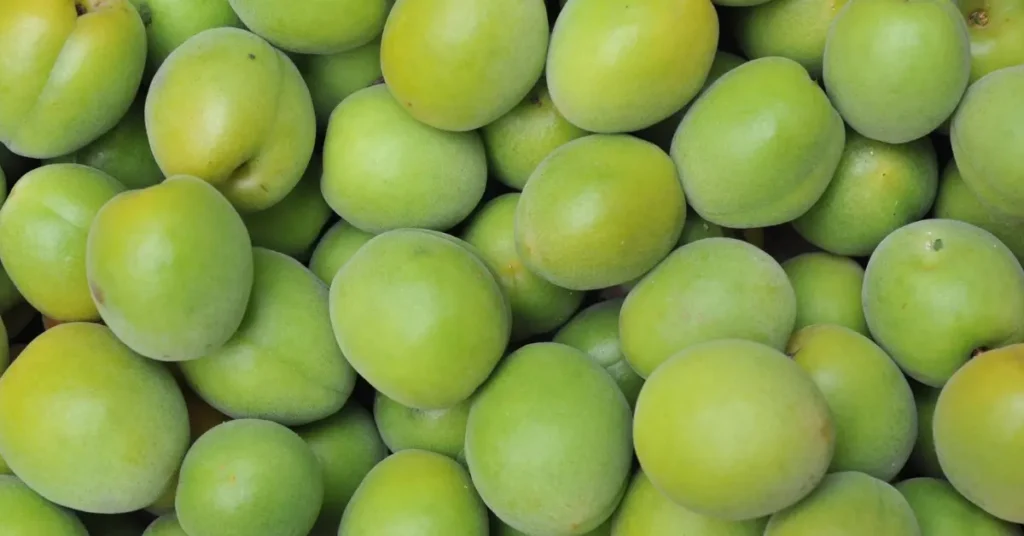
3. Kaki Fruit
The Kaki Fruit, also known as the Japanese Persimmon, is a bright orange fruit native to China and Japan. It has a unique cone-shaped appearance and is about the size of a tomato.
The Kaki Fruit is a good source of vitamins A, C, and E, fiber, and antioxidants. It has a sweet and slightly tangy flavor and can be eaten fresh or used in various recipes, from salads to desserts.
When ripe, the fruit has a soft and jelly-like texture, which some people may find off-putting. However, it can be enjoyed when slightly firm and crisp, similar to an apple.

4. Kiwi Fruit
The Kiwi Fruit, also called the Chinese Gooseberry, is a brown, fuzzy fruit native to China. It is now grown in many countries, including New Zealand, where it was named after its national bird.
Kiwis are a nutrient-dense fruit, rich in vitamins C and K, folate, potassium, and fiber. They have a sweet, tangy flavor and soft, juicy green flesh. The skin is not commonly eaten but edible; some people enjoy its textural contrast.
Kiwis are versatile and can be enjoyed as a snack, added to fruit salads, or used in desserts such as cakes and smoothies.
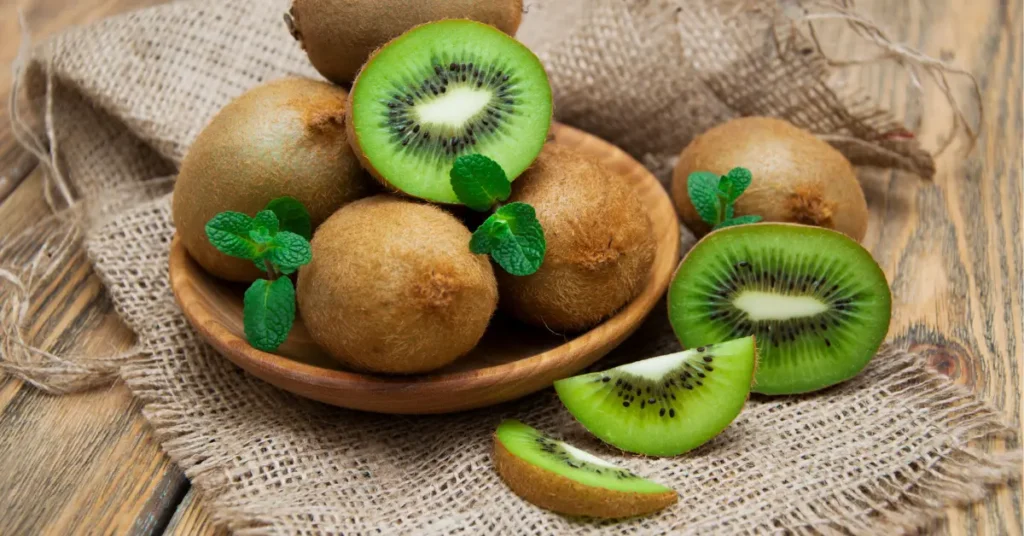
5. Kiwano Melon
The Kiwano Melon, also known as the Horned Melon, is a fruit native to Africa. Its unique appearance is spiky, bright orange skin and green or yellow, jelly-like flesh inside.
The Kiwano Melon is a good source of vitamin C and potassium. It has a mild and refreshing flavor, similar to a mix of cucumber and banana. The flesh has a gelatinous texture, making it a popular addition to fruit salads, cocktails, and smoothies.
The Kiwano Melon is also believed to have health benefits such as improving digestion and boosting the immune system. It is a relatively new addition to supermarkets in the United States but can also be found at local farmers’ markets.
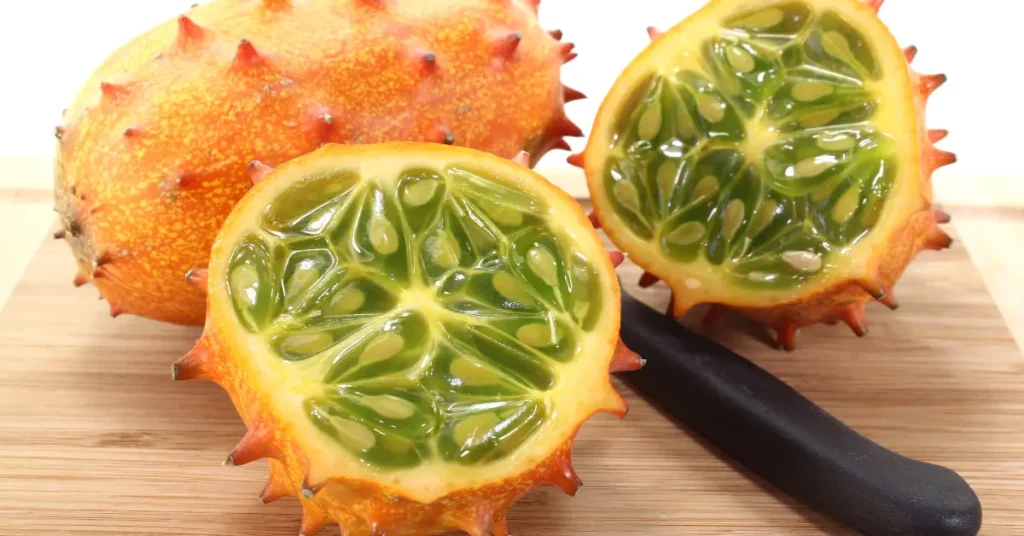
6. Kumquat
The Kumquat is a small, oval-shaped orange fruit native to China. Its name means ‘golden orange’ in Cantonese. The Kumquat’s skin is thin and edible, unlike other citrus fruits, while the flesh is tart and has a few seeds.
Kumquats are rich in vitamin C and fiber, and their peel contains antioxidants. They have a unique sweet and sour flavor and are often used in making marmalade or added to salads for a burst of tanginess.
They are also famous for decorative purposes and are commonly used in flower arrangements and centerpieces during the holiday season.
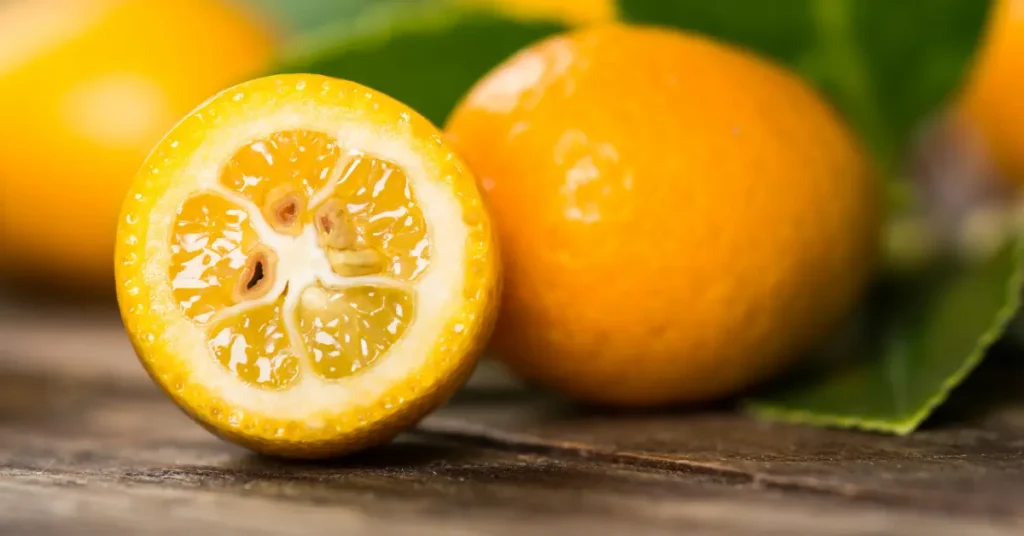
7. Kalala Plum
The Kalala Plum, also known as the Natal Plum, is a small, round fruit native to South Africa. It has deep red skin and a juicy, white flesh with a mild, sweet-tart flavor.
The fruit is a good source of vitamins A, C, and E, as well as iron, calcium, and potassium. It is commonly used in jams, jellies, and chutneys or eaten fresh as a snack. It can also be dried and preserved for later use.
The Kalala Plum is believed to have numerous health benefits, including improving heart health and promoting digestion. It is also used in traditional medicine to treat coughs and colds.
8. Kumis-Kumis
The Kumis-Kumis, or the Black Plum or Java Plum, is a small fruit widely grown in Southeast Asia and India. It is a mango relative and similar in shape and texture to a plum.
The fruit has dark purple skin and a sweet, juicy flesh, often described as a cross between a plum and a grape. It is high in vitamin C and antioxidants and is commonly used in jams, pickles, and desserts in its native countries.
The Kumis-Kumis is also believed to have various health benefits, including improving digestion and immunity. It is also used in traditional medicine to treat diabetes and respiratory problems.
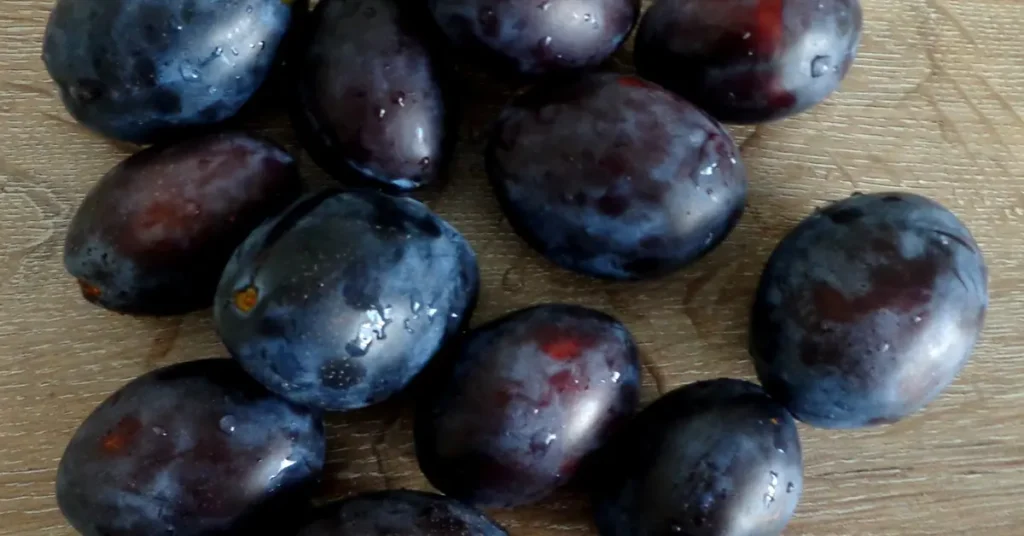
9. Katahal
Katahal, also known as Jackfruit, is a fruit native to South and Southeast Asia. It is a large, oblong-shaped fruit with a rough and spiky skin. The inside of the fruit contains numerous yellow, fleshy pods and seeds.
A popular meat alternative among vegetarians and vegans, Jackfruit’s texture and mild flavor make it a versatile ingredient in savory dishes. It is high in protein, fiber, and various vitamins and minerals, making it a nutritious addition to a plant-based diet.
Katahal is commonly used in curries, stews, and salads, and its seeds are also edible and can be roasted or boiled for a snack. Its ripe fruit, like mangoes or pineapples, can also be enjoyed as a dessert.
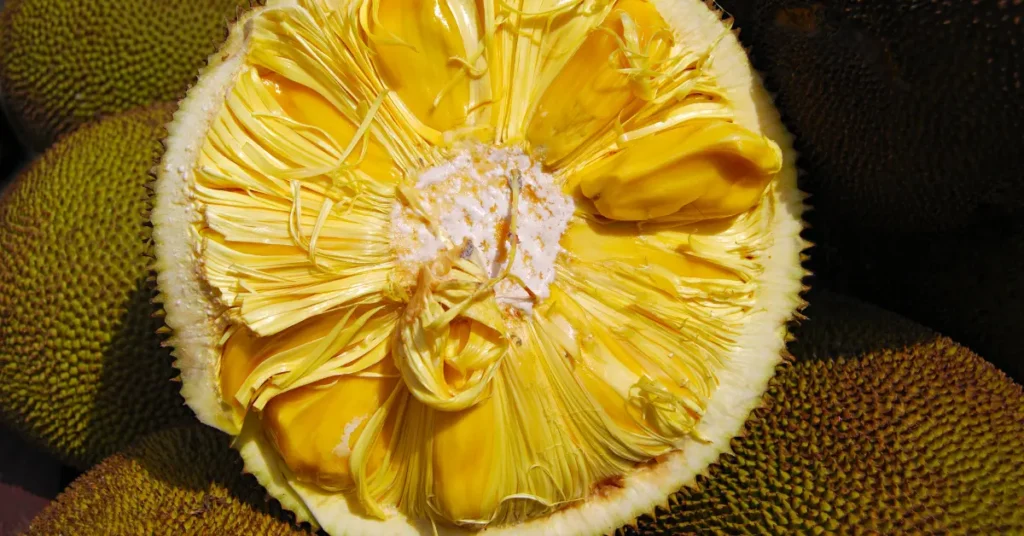
Conclusion:
Fruits that start with K may not be as common as some other fruits, but they certainly have unique flavors and health benefits worth exploring. From the tangy Kaffir Lime to the superfood Kakadu Plum, there are plenty of options to add to your fruit basket or healthy meals. Don’t be afraid to try something new and incorporate these fruits into your diet for a more diverse and nutritious eating experience.

